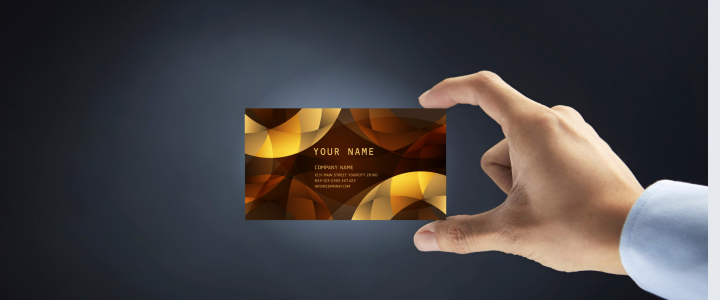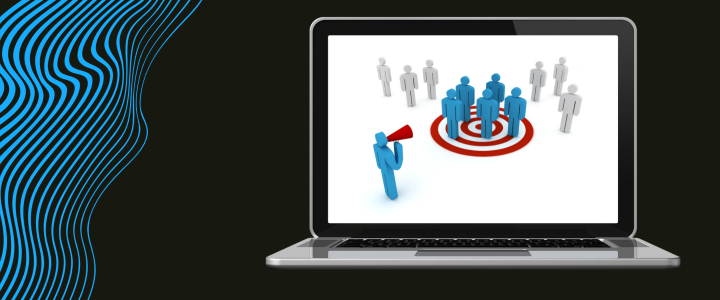In the ever-evolving landscape of business networking, digital business cards have emerged as a powerful tool for professionals to make meaningful connections, streamline communication, and leave a lasting impression. In this comprehensive guide, we will explore the myriad benefits of using a digital business card, backed by detailed insights and real-world examples.
1. Eco-Friendly and Sustainable:
In an era where sustainability is a top priority, digital business cards offer an eco-friendly alternative to traditional paper cards. By eliminating the need for physical materials, printing, and transportation, professionals can contribute to a greener environment. Consider the example of a tech company showcasing their commitment to sustainability by using digital business cards at industry conferences, accompanied by an image illustrating the carbon footprint reduction associated with digital cards.
Example: A marketing executive from a sustainable tech startup attends a green technology conference. Instead of handing out traditional paper business cards, they share a digital card that highlights the company's eco-friendly initiatives. The image accompanying this example could depict the executive engaged in a conversation with conference attendees while sharing their digital business card on a tablet.
2. Instant Accessibility:
One of the primary advantages of digital business cards is their instant accessibility. Professionals can share their contact information with a simple tap or click, allowing for immediate connection without the hassle of physical card exchanges. Imagine a scenario where a freelancer attending a networking event quickly connects with potential clients by effortlessly sharing their digital business card via a QR code, depicted in an image.
Example: A freelance graphic designer attends a creative industry networking event. When someone expresses interest in their work, the designer effortlessly shares their digital business card by having the contact open on their smartphone and allowing the other person to scan the QR code. The image could show the smooth exchange, highlighting the simplicity of the process.
3. Rich Media Integration:
Unlike traditional business cards, digital cards enable the integration of rich media elements such as images, videos, and links. This allows professionals to showcase their portfolio, highlight achievements, or provide links to social media profiles, creating a more engaging and dynamic representation of their personal brand. An example could be a graphic designer using a digital business card to showcase a portfolio snippet, accompanied by an image.
Example: An architect utilizes a digital business card to include a brief video walkthrough of a recent project. When networking with potential clients, they share the digital card, allowing the recipients to experience the design in a more immersive way. The accompanying image could show a screenshot from the video within the digital business card.
4. Real-Time Updates:
Digital business cards can be updated in real-time, ensuring that your contacts always have access to the latest information. This is particularly beneficial for professionals who frequently change roles, contact details, or want to showcase recent projects. Consider the example of a project manager updating their digital business card in real-time to highlight a recently completed successful project, with an accompanying image illustrating the ease of updating information.
Example: A project manager attending a business conference updates their digital business card in real-time to showcase the successful completion of a major project. The image could depict the manager updating the card on their smartphone and seamlessly sharing it with other conference attendees.
5. Analytics and Insights:
Tracking the effectiveness of your networking efforts becomes seamless with digital business cards. Analytics tools can provide valuable insights into how often your card is viewed, which elements are most engaging, and even track conversion rates. Imagine a sales executive using analytics data from their digital business card to refine their pitch and engagement strategy, supported by an image of an analytics dashboard.
Example: A sales representative uses the analytics data from their digital business card to identify which product offerings are generating the most interest. The image could show the representative analyzing the data on a computer and adjusting their pitch accordingly during a client meeting.
6. Global Reach:
Digital business cards transcend geographical boundaries, allowing professionals to connect with individuals worldwide. Whether attending an international conference or collaborating on a global project, the ease of digital sharing ensures that your contact information is accessible to anyone, anywhere. An image of a globe with digital business cards connecting different continents could visually represent this global reach.
Example: A software developer attending a virtual global hackathon connects with team members from different countries by sharing their digital business card. The image could illustrate the virtual meeting with participants joining from various locations and exchanging digital business cards.
7. Cost-Effective Solution:
Printing and designing traditional business cards can be a significant expense for businesses. Digital business cards offer a cost-effective solution, eliminating recurring costs associated with printing and reducing the environmental impact of paper production. Include a cost comparison image between traditional and digital business cards, showcasing the potential cost savings over time.
Example: A startup entrepreneur illustrates the cost-effectiveness of digital business cards by comparing the expense of printing traditional cards for a large networking event versus the negligible cost of updating and sharing digital cards. The image could show the entrepreneur presenting the cost breakdown on a digital tablet.
8. Contactless Networking in a Post-Pandemic World:
The COVID-19 pandemic has accelerated the shift towards contactless interactions. Digital business cards align with this trend, providing a safe and hygienic alternative to physical exchanges. Incorporate an image depicting a contactless exchange of digital business cards via smartphones at a post-pandemic networking event.
Example: A health and safety consultant participates in a conference where attendees prefer contactless interactions. The consultant seamlessly exchanges digital business cards with other professionals using smartphones, showcasing the adaptability of digital cards to new norms. The image could capture the contactless exchange with a background of masked professionals in a conference setting.
9. Enhanced Searchability:
Finding a specific contact from a stack of physical business cards can be time-consuming. Digital business cards offer search functionality, making it easy for professionals to locate and connect with specific contacts in their digital Rolodex. Illustrate this point with an image of a search bar and relevant contact results within a digital business card app.
Example: A marketing manager with a vast network easily locates a specific contact by using the search function on their digital business card app. The image could show the manager typing the contact's name into the search bar and instantly accessing the relevant details.
10. Integration with CRM Systems:
Seamless integration with Customer Relationship Management (CRM) systems is a significant advantage of digital business cards. This integration ensures that all contact information is automatically stored and organized, streamlining follow-ups and relationship management. An example could be a sales team using digital business cards seamlessly integrated with their CRM system to manage leads and track interactions.
Example: A sales team, after attending a trade show, automatically updates their CRM system with contacts acquired through digital business cards. The image could depict the team syncing their digital business card app with the CRM system, showcasing the efficiency of the integrated workflow.
Best Practices for Design and Sharing:
Keep It Concise and Relevant: The key to an effective digital business card is brevity. Include only essential information to maintain clarity and relevance.
Choose a Professional Design: Opt for a clean and professional design that aligns with your personal brand. Use a professional headshot and consistent branding elements.
Include a Call-to-Action: Encourage recipients to take action by including a clear call-to-action, such as visiting your website, connecting on LinkedIn, or scheduling a meeting.
Utilize QR Codes and NFC Technology: Incorporate QR codes and Near Field Communication (NFC) technology to facilitate easy and quick sharing of your digital business card.
Test Cross-Platform Compatibility: Ensure that your digital business card is compatible with various devices and platforms to guarantee a seamless experience for all recipients.
Conclusion:
Digital business cards have undoubtedly revolutionized the way professionals connect and network in the digital age. From environmental sustainability to real-time updates and global reach, the benefits are vast and varied. By adopting best practices in design and sharing, individuals can harness the full potential of digital business cards to leave a lasting impression and foster meaningful connections in today's fast-paced business world.



